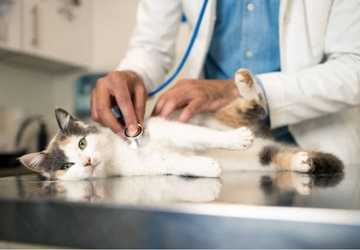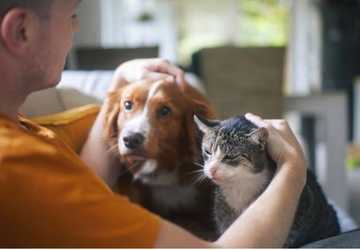Declawing, or onychectomy, is a surgical intervention that extracts a cat's claws. It is often misinterpreted and perceived as a mere removal of the nail, analogous to trimming human nails. However, why not declaw cats? It becomes perspicuous when you discern that the procedure entails amputating the terminal phalanx of each toe. This is equivalent to severing a human finger at the distal interphalangeal joint. The dangers of declawing cats are manifold and pervasive, impacting their physical health, comportment, and overall welfare.
The Somatic Ramifications of Declawing

One of the principal dangers of declawing cats is the immediate physical trauma. The surgery can engender excruciating pain, haemorrhage, and sepsis. Moreover, some cats develop complications such as lameness, dorsalgia, and the regrowth of improperly excised claws, which can be exceedingly painful.
Persistent Pain and Long-Term Sequelae
Declawed cats frequently experience chronic algia. This is because the excision of the terminal phalanx in their toes alters their ambulation, imposing stress on their articulations and vertebral column. The altered gait can precipitate osteoarthritis and protracted mobility issues, further accentuating why not to declaw cats.
Compromising Natural Defense Mechanisms
The act of declawing fundamentally eviscerates a cat's intrinsic defence mechanisms. Felines utilize their claws for various essential activities, including ascension, predation, and self-preservation. The incapacity to perform these actions can precipitate a state of perpetual susceptibility, emphasizing why not to declaw cats.
Impact on Social Interactions
The dangers of declawing cats permeate their social dynamics. Bereft of claws, felines may find it arduous to establish and maintain their hierarchical status with conspecifics. This perturbation can catalyze augmented stress and hostility, further underscoring why not to declaw cats.
Evolutionary Disadvantage
Declawing engenders an evolutionary detriment. The procedure deprives felines of critical survival apparatuses, rendering them inept at efficaciously navigating their milieu. The dangers of declawing cats are not solely immediate but also longitudinal, impinging on their capacity for adaptation and flourishing.
Behavioral Transformations
Behavioral anomalies are another significant aspect when contemplating why not to declaw cats. Cats rely on their claws for instinctual behaviors, such as scratching to demarcate territory, stretch muscles, and alleviate stress. Deprived of claws, cats may become more combative or resort to biting as a defensive mechanism. The dangers of declawing cats include heightened aggression and a greater propensity for developing neurasthenia and melancholia.
Psychological Consequences
The psychological dangers of declawing cats are profound. Declawed cats can suffer from heightened stress and vexation due to their incapacity to engage in instinctual activities. This can culminate in behavioral issues such as inappropriate urination and defecation outside the litter box. Understanding why not to declaw cats elucidates the significance of preserving their natural behaviors and ensuring their psychological well-being.
Long-Term Health Consequences
Neurological Implications
Declawing can engender neurological complications due to iatrogenic nerve trauma during the procedure. These sequelae further exemplify the dangers of declawing cats and underscore why not to declaw cats from a neurophysiological perspective.
Increased Susceptibility to Joint Disorders
Felines subjected to declawing are predisposed to articulatory disorders. The aberrant gait resulting from the excision of claws imposes disproportionate stress on their joints, culminating in chronic afflictions such as osteoarthritis, which highlights the dangers of declawing cats.
Alternatives to Declawing

Numerous alternatives to cat declawing exist that can efficiently manage undesirable scratching behaviors without harming the cat.
Routine Nail Trimming
Regularly trimming your cat's nails can mitigate the damage caused by scratching. This simple and non-invasive practice can be an indispensable part of alternatives to cat declawing.
Provision of Scratching Posts and Pads
Investing in scratching posts and pads provides cats an appropriate outlet for scratching. These items come in various materials and designs, incentivizing cats to scratch on them rather than furniture. This is one of the most productive alternatives to cat declawing as it redirects the behavior without compromising the cat's well-being.
Application of Soft Paws
Soft Paws are vinyl nail caps that can be adhered to a cat's claws. They prevent scratching damage while allowing the cat to extend and retract its claws naturally. Soft Paws are a humane and effective alternative to cat declawing.
Behavioral Conditioning
Training your cat to use scratching posts and rewarding positive behavior can be a beneficial alternative to cat declawing. Positive reinforcement encourages cats to use their claws appropriately.
Environmental Enrichment
Facilitating an enriched milieu constitutes a highly productive alternative to cat declawing. Integrating interactive playthings, climbing contraptions, and scratching posts can divert a feline's attention from deleterious scratching proclivities.
Use of Deterrent Sprays
Deterrent sprays, imbued with olfactory stimuli repugnant to felines, can be applied to furnishings and other loci where scratching is undesirable. This method serves as a pragmatic alternative to cat declawing by dissuading destructive behavior without inflicting harm.
Physical Barriers
Employing physical obstructions such as double-sided adhesive or protective covers on furnishings can deter felines from inappropriate scratching. These impediments are an immediate alternative to cat declawing, safeguarding household items while preserving the cat's natural proclivities.
Veterinary Perspectives on Declawing
Many veterinarians vehemently oppose declawing due to the numerous dangers of declawing cats. The procedure is prohibited or restricted in several countries and U.S. cities due to its inhumane nature. Veterinary professionals advocate for alternatives to cat declawing as they are safer and more ethical.
Ethical Considerations and Legislative Measures
Global Ban Movements
Many nations and municipalities have instituted bans or stringent regulations on declawing, acknowledging the dangers of declawing cats. These juridical measures reflect an ethical consensus on the practice, accentuating why not to declaw cats.
Ethical Veterinary Practices
Veterinary practitioners with an ethical ethos champion alternatives to cat declawing, harmonizing their methodologies with humane treatment paradigms. They proffer exhaustive guidance to pet guardians on managing scratching behavior sans recourse to declawing.
Humane Society Positions
Paramount animal welfare entities, such as the Humane Society, are vehemently opposed to cat declawing. They explain why cats should not be declawed and advocate for alternatives that ensure the well-being and humane treatment of felines.
Conclusion
The evidence against declawing is incontrovertible, highlighting why cats should not be declawed. The dangers of declawing extend beyond immediate physical pain to include chronic pain, behavioral transformations, and psychological distress. By exploring alternatives to cat declawing, cat owners can ensure their pets remain healthy, content, and free from unnecessary suffering.
